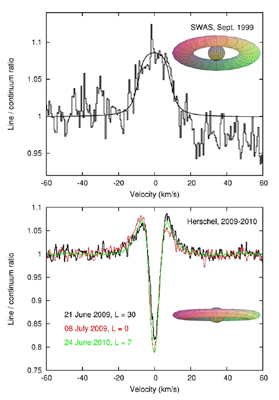Direct detection of the Enceladus water torus with Herschel (P. Hartogh et al.)
- Details
- Published on 11 July 2011
Vol. 532In section 1. Letters to the Editor
Direct detection of the Enceladus water torus with Herschel

Enceladus is famous for its planetary-size geysers. Data from the Cassini spacecraft recently permitted the composition of its plumes to be determine and the discovery its auroral footprint on Saturn. Hartogh et al., presenting far-infrared observations from the space telescope Herschel, now report the direct detection of a torus around Saturn consisting of water-dominated gases and ice particles that have escaped from Enceladus' interior. This finding is important because these gases and particles are typical of those that eventually fall into the atmospheres of Saturn and Titan or coat the surfaces of the satellites and rings, altering their compositions. The inferred flux at Saturn is consistent with that required to explain the planet's stratospheric composition. However, at Titan this flux is still too weak. Hence, the source of Titan's atmospheric water remains mysterious.

